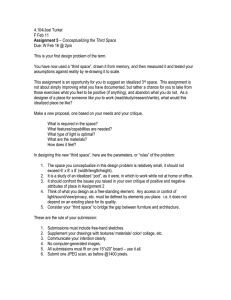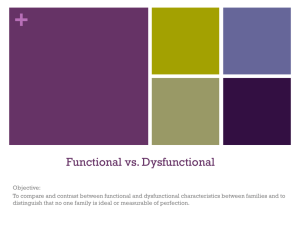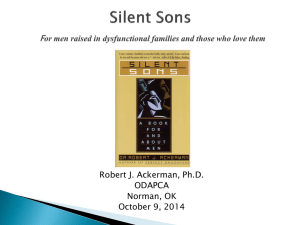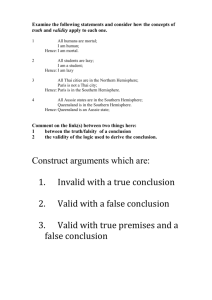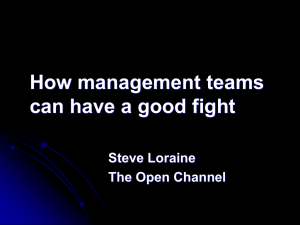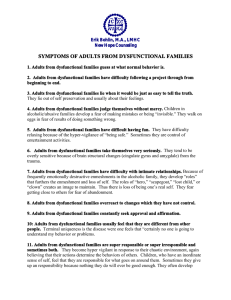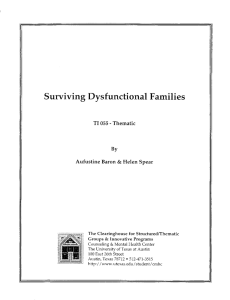Two Pattern Worksheet
advertisement
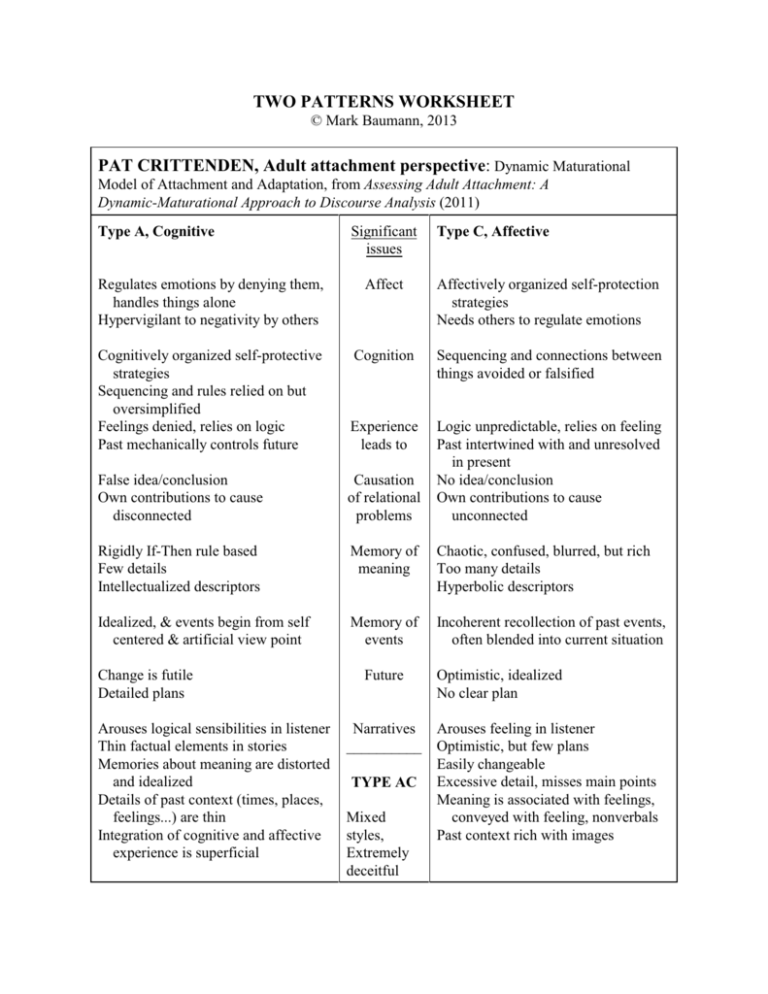
TWO PATTERNS WORKSHEET © Mark Baumann, 2013 PAT CRITTENDEN, Adult attachment perspective: Dynamic Maturational Model of Attachment and Adaptation, from Assessing Adult Attachment: A Dynamic-Maturational Approach to Discourse Analysis (2011) Type A, Cognitive Significant issues Type C, Affective Regulates emotions by denying them, handles things alone Hypervigilant to negativity by others Affect Affectively organized self-protection strategies Needs others to regulate emotions Cognitively organized self-protective strategies Sequencing and rules relied on but oversimplified Feelings denied, relies on logic Past mechanically controls future Cognition Sequencing and connections between things avoided or falsified Experience leads to False idea/conclusion Own contributions to cause disconnected Causation of relational problems Logic unpredictable, relies on feeling Past intertwined with and unresolved in present No idea/conclusion Own contributions to cause unconnected Rigidly If-Then rule based Few details Intellectualized descriptors Memory of meaning Chaotic, confused, blurred, but rich Too many details Hyperbolic descriptors Idealized, & events begin from self centered & artificial view point Memory of events Incoherent recollection of past events, often blended into current situation Change is futile Detailed plans Arouses logical sensibilities in listener Thin factual elements in stories Memories about meaning are distorted and idealized Details of past context (times, places, feelings...) are thin Integration of cognitive and affective experience is superficial Future Narratives __________ TYPE AC Mixed styles, Extremely deceitful Optimistic, idealized No clear plan Arouses feeling in listener Optimistic, but few plans Easily changeable Excessive detail, misses main points Meaning is associated with feelings, conveyed with feeling, nonverbals Past context rich with images IAIN MCGILCHRIST, bi-lateral neo-cortex perspective: The Master and his Emissary; The Divided Brain and the Search for Meaning (2010); Reciprocal Organization of the Cerebral Hemispheres (2010) (“hemispheric Utilization Bias”) Left Hemisphere Connected internally, not with right brain nor with the body Linear, sequential Fixity Narrow things down to a certainty logical, focused on details to the exclusion of bigger picture Sharply focused on details Literal Sees parts & categories of parts, but not a “whole” individual Re-presents the world (in touch only with represented not real world) Abstracts from invariant representations of objects/world Precise Preference for inanimate and manmade things Linguistic, verbal, able to describe with increasing detail In the service of manipulation Cannot find meaning in the parts, but finds a conclusion Predictability Division Parts Abstraction (re-representation) Categories Nonliving Right Hemisphere Physical differences Attentional focus Top 6 Differences vs. Right hemisphere deeply interconnected the body Curvilinear, non-sequential Flow Open up possibilities Emotional/relational, to the exclusion of the details and solutions Broad, open, vigilant Figurative, metaphorical Sees a “whole,” but not the parts or categories Presences us to the world (in touch with real world) Creates a “whole” from the context rather than rules Intuitive Preference for animate and natural/ environmental things Nonverbal (but makes a “whole” from words) In the service of connection Finds a meaning, not the parts, but not a conclusion Possibility Integration Whole Context Individuals Living Type A example of a dysfunctional parent: I love me, you don’t matter Type C example of a dysfunctional parent: You love me, and you don’t matter Type AC example of a dysfunctional parent: I don’t love me you need to, and you don’t matter
